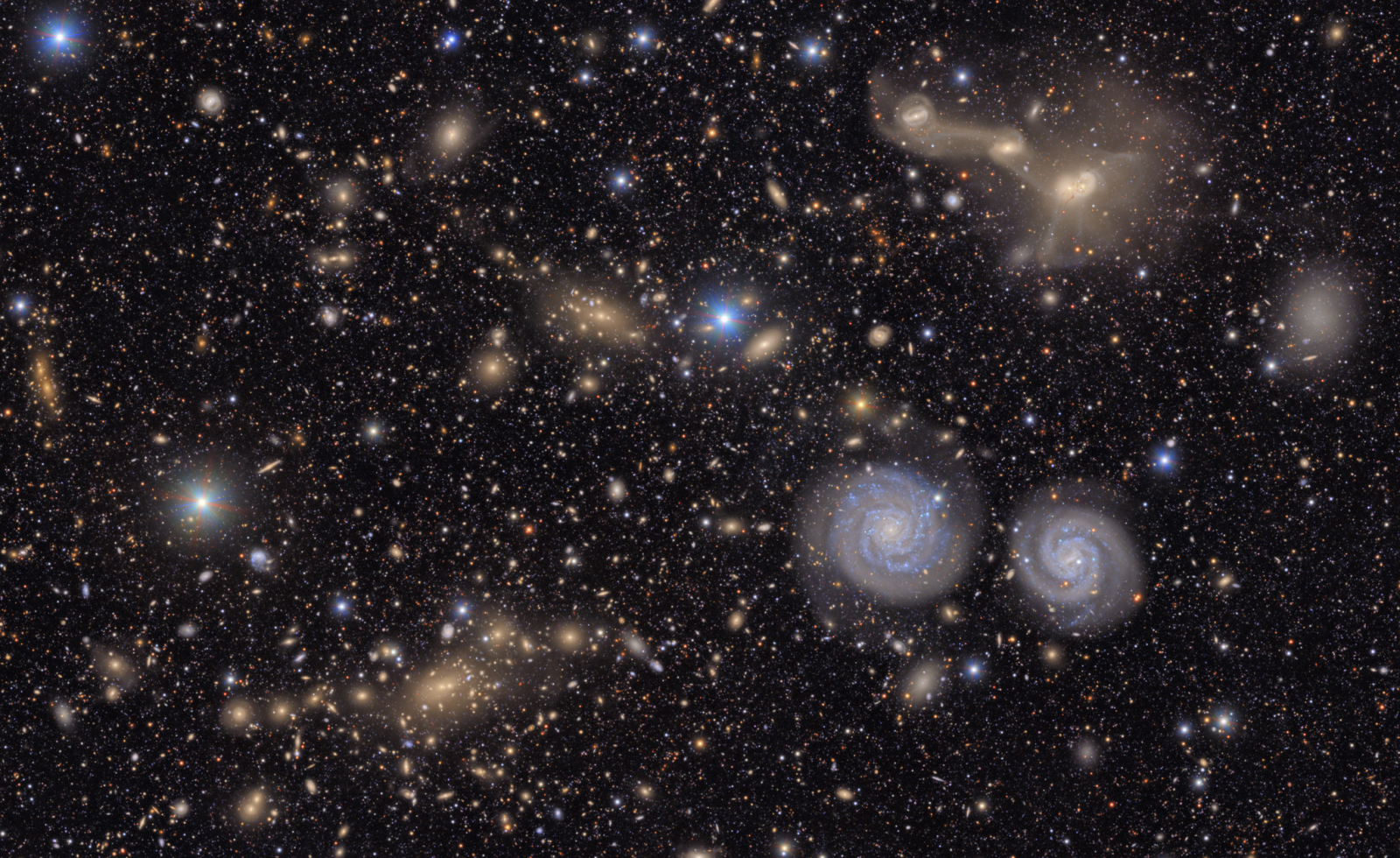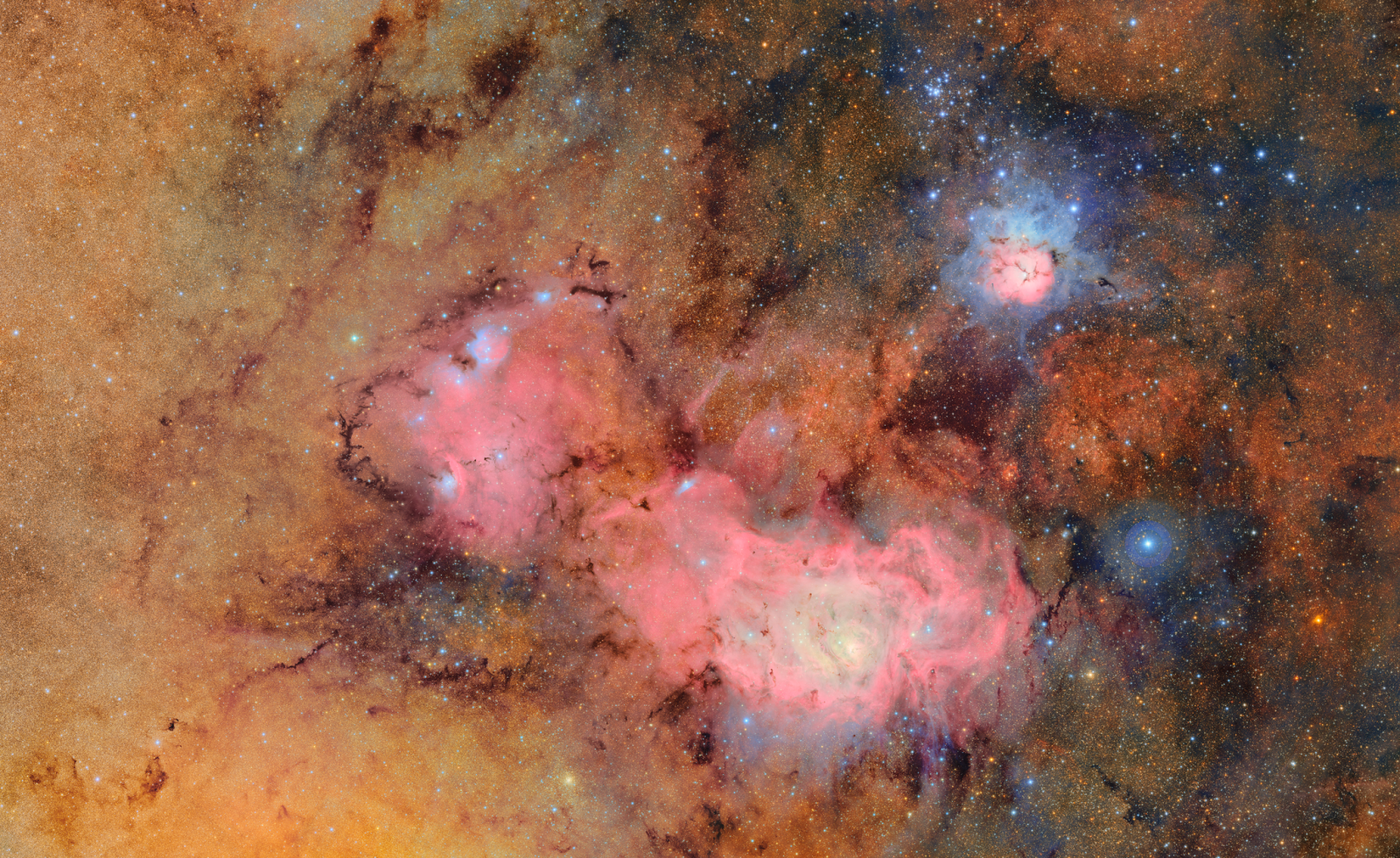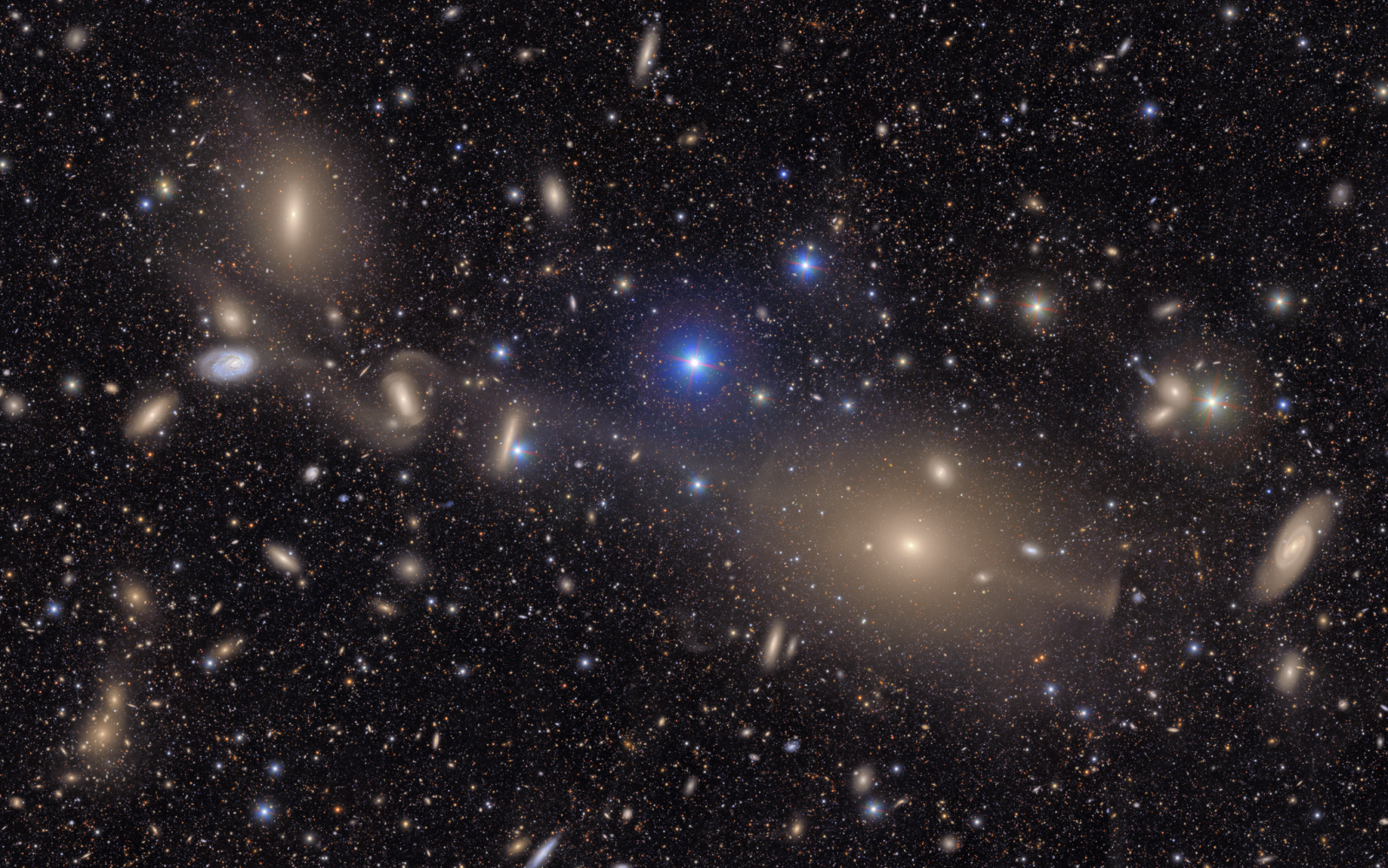Named after Charles Simonyi, the 8.4 metre diameter telescope at the Vera C. Rubin Observatory in Chile, USA, will begin its ten-year sky survey programme at the end of this year. Charles Simonyi, a Hungarian-born inventor who has already been to space twice, made a substantial financial donation to the telescope's main mirror in 2008. The observatory is being built in Chile at an altitude of 2680 metres. The telescope, which will soon be operational, will house the world's largest digital camera, capable of capturing an images that covers an area of 49 full-moons of sky in a single frame, with a sensor surface of 3200 megapixels (the equivalent of 400 ultra-HD displays).
The Vera C. Rubin Observatory's Legacy Survey of Space and Time (LSST) will provide a more detailed picture than ever before of the universe's near and distant objects and their changes. It will record anything unusual: the movement of Solar System objects, the brightening and fading of stars, supernova explosions and other cosmic cataclysms. It will send out 10 million alerts a night about changes in the sky, within 60 seconds of each individual image being taken. These alerts will be fully public.
The first breathtaking images taken with the Simonyi telescope were released on 23 June 2025 at a press conference in Washington DC. The LSST First Look event involved 350 locations worldwide.

This image, taken by the Vera C. Rubin Observatory from the southern part of the Virgo galaxy cluster, about 55 million light-years away, shows just a small part of the universe, providing a glimpse of its diversity. The image shows two prominent spiral galaxies, three merging galaxies, groups of nearby and distant galaxies, stars in our own Milky Way and many other objects. Cerdit: NSF-DOE Vera C. Rubin Observatory
The colour time-lapse movie, i.e. the observation taken with six filters, will represent a previously unimaginable amount of data: 500 petabytes by the end of the ten-year programme. The LSST will record 20 terabytes of data per night (for comparison: Hubble Space Telescope gathers: 2 gigabytes, James Webb Space Telescope: 57 gigabytes per night). To illustrate the effectiveness of one of the most important ground-based astrophysical observing programmes of the decade, in the time it takes someone to switch on their phone and take a selfie, the LSST will have photographed hundreds of thousands of galaxies, most of which have never been observed before.
Named after dark matter discoverer Vera Rubin, who died in 2016, the observatory will revolutionise astronomy in the following areas: the study of the dark universe, i.e. dark matter and dark energy, the Milky Way, variable stars, transients and stellar explosions (novae, supernovae and other transient astrophysical objects), and small celestial objects in the Solar System, including comets from alien solar systems and minor planets approaching Earth.

The Trifid and Lagoon nebulae. The image is a great illustration of what makes the LSST unique: its extremely wide field of view and the speed with which it can produce a large number of huge images in a short time. Combining the images reveals fine details in clouds of gas and dust. This nearly 5 gigapixel image was taken by combining 678 exposures in just 7.2 hours of observation time. In total, about two trillion(!) pixels of data were processed during the compilation. No other observatory can currently produce images covering such a large area of sky, at such a depth and so quickly. Credit: NSF-DOE Vera C. Rubin Observatory.
Hungarian contribution
Hungarian researchers will have access to the LSST data in exchange for an in-kind contribution. This will include software development in several areas: the classification of variable stars using artificial intelligence, the study of faint comets and asteroids, and the compilation of galaxy catalogues to help fully exploit and process the data. In return, researchers at the HUN-REN Research Centre for Astronomy and Earth Sciences, the ELTE Institute of Physics and Astronomy and the ELTE Gothard Astrophysical Observatory in Szombathely, Hungary, will be able to engage in studies on cosmology, Solar System, astrophysical transients, variable stars and galactic archaeology. The LSST is an international collaboration of about 4000 researchers and engineers worldwide. The CSFK Konkoly Observatory joined the preparatory work of the LSST in 2013, and thanks to Róbert Szabó's (the Hungarian LSST in-kind contribution leader) Lendület grant (2018-23) Hungarian access has been expanded, giving immediate access to LSST data to no less than 25 Hungarian researchers.

This image also shows a small detail of the Virgo galaxy cluster, revealing both the large-scale arrangement and the faint details of this dynamic region of the universe. While the bright stars in the foreground are part of our own Milky Way, the background is dominated by a sea of distant red galaxies. Credit: NSF-DOE Vera C. Rubin Observatory
Additional images and information
The live broadcast in Hungarian following the Washington press conference presenting the first images of the LSST, with commentary by Svábhegy Observatory staff and invited experts, can be watched back here (in Hungarian):
https://www.youtube.com/live/c4VCaLR4igE?feature=shared&t=352
Additional LSST First Look imagery:
https://rubinobservatory.org/gallery/collections/first-look-gallery